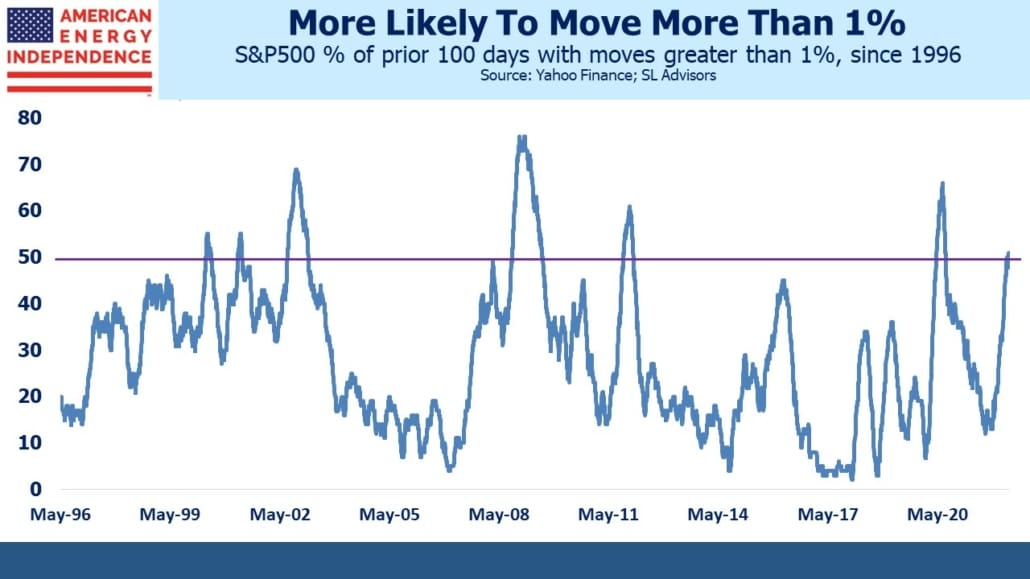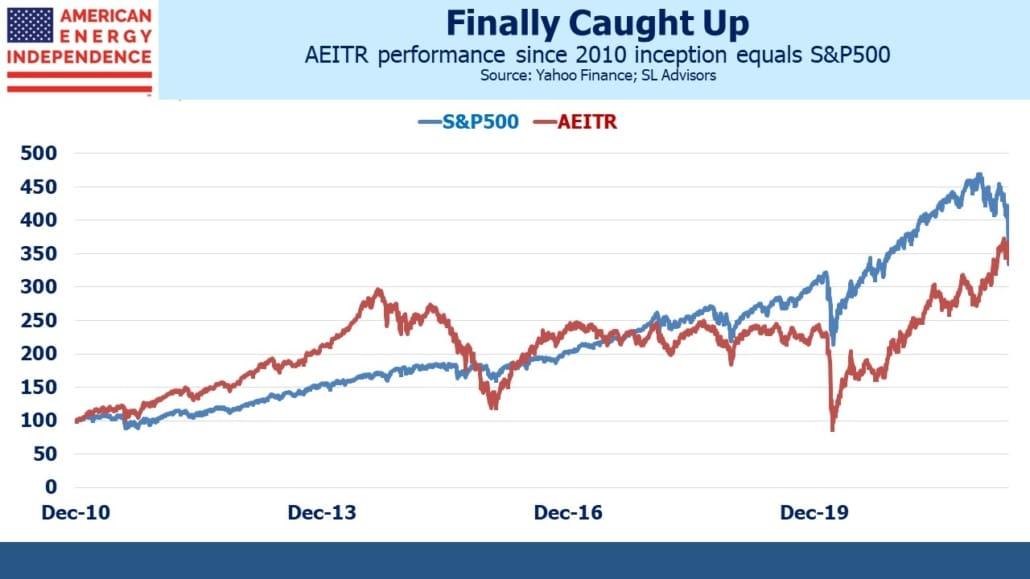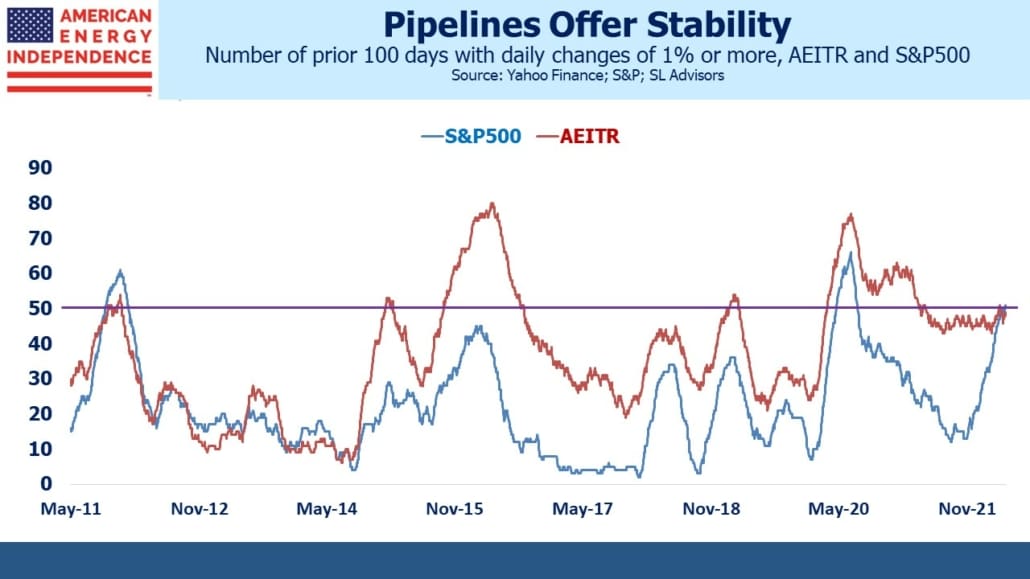Pipelines Are Less Volatile Than You Think
If it feels like the market’s daily swings are giving you whiplash, you’re right. Following Monday’s rout, the number of daily moves in excess of 1% breached 50% over the past hundred days. In other words, a 1% or greater change in the S&P500 is now more likely than not.
This is unusual. Markets were remarkably calm in the second half of last year. Volatility picked up towards year end as it became clear the Fed was way behind in normalizing policy. Nonetheless, such periods are rare. In the last quarter century such regimes have only existed for 8% of the time. Oddly, this doesn’t augur poor returns. For example, in April 2020 market volatility crossed that “more likely than not” threshold and the subsequent one year return was almost 50%.
However, it does mean advisors will spend more time discussing the outlook with clients. Inflation, an unexpected war in Europe and China’s vain attempt to stamp out Covid are significant headwinds. Recession risks in Europe are rising too. Germany is scrambling to overcome its reliance on Russian natural gas. They are under increasing pressure to unilaterally stop imports, which would likely plunge Germany into a recession, and partial darkness.
Chancellor Olaf Scholz recently said, “It doesn’t help anyone if the lights go out here. Not us and not Ukraine,” But who really expects Russian gas to keep flowing reliably up until the moment Germany closes Nordstream One? Ending Russian gas supply is likely to be timed to suit Russia not Germany. Russia’s infrastructure precludes quickly rerouting their gas to Asia. A move that’s intended to harm Russia is unlikely to be implemented on Germany’s timeframe. So it’s probably going to be disruptive.
Value sectors including energy have returned with a vengeance. Bloomberg calculated that Cathie Wood’s ARK Innovation ETF (ARKK) has now underperformed the S&P500 since its launch in October 2014. Early this year ARKK crossed another ignominious threshold when we showed how poor has been the typical ARKK holder’s experience (see ARKK’s Investors Have In Aggregate Lost Money). ARKK’s since inception performance has not yet been exceeded by the American Energy Independence Index (AEITR), but rest assured that we shall note such in a future blog post if it occurs.
The AEITR did reach another milestone though – from the index inception date on 12/29/2010, it has now outperformed the S&P500. For most of the past decade investing in pipelines looked like a reliable way to lag the market. Regular readers know our confidence in midstream energy infrastructure has never been swayed by returns that at times presented powerful evidence of misplaced optimism. Ample history showing we have no skill at market timing means we’re still bullish on the sector – to us the reasons are abundant, just as the supply of reliable energy is constrained. Energy investors were cheered by Saudi oil minister Prince Abdulaziz bin Salman’s comment that, “The world needs to wake up to an existing reality. The world is running out of energy capacity at all levels.” I’m the driver you see smiling at the gas pump.
The pipeline sector is not only beating the S&P500. It’s also moving less. By the “more likely than not to move 1% or more” definition, the AEITR has the edge over the S&P500. This has rarely been the case over the past decade. The capital profligacy of the Shale Revolution caused volatility up and then down. Energy transition fears and Covid heaped further uncertainty. But they’ve been replaced by financial discipline, energy realism and the end of Covid (other than in China).
First quarter pipeline company earnings were very good, with most big companies beating expectations. Natural gas exports are creating more opportunities. Energy Transfer expects to move ahead with their Lake Charles liquefaction facility by the end of the year (see High-Energy Earnings Boost Pipelines). Even conservatively run Enbridge expects to profit from growing global demand for US natural gas. CEO Al Monaco recently said, “LNG exports are a big opportunity, with momentum building across the U.S. Gulf Coast, and now more so in western Canada.”
North American midstream energy infrastructure is steadily making up for lost ground over many timeframes. It’s doing so with no more volatility than the market, and in recent months has provided a very welcome negative correlation with traditional stock/bond portfolios. It’s worth noting that recession fears have had only a muted effect on energy prices. Crude oil is still around $100 and the Asian JKM benchmark for natural gas is at $27 per million BTUs for next winter, more than triple the US Henry Hub price. We continue to believe the pipeline sector offers attractive return potential to the long term investor.
We have three funds that seek to profit from this environment:
Please see important Legal Disclosures.


